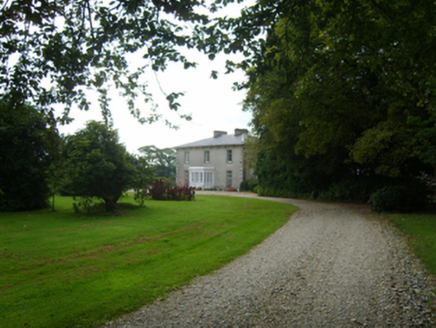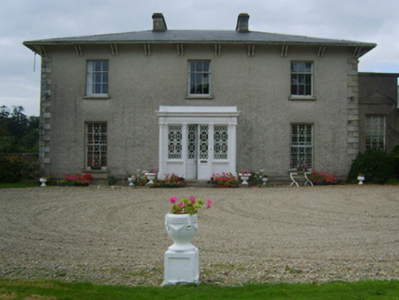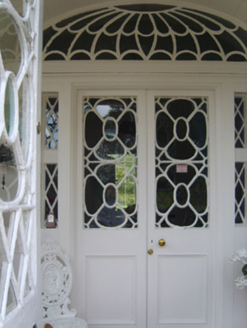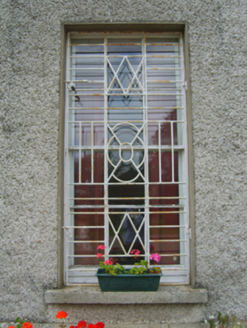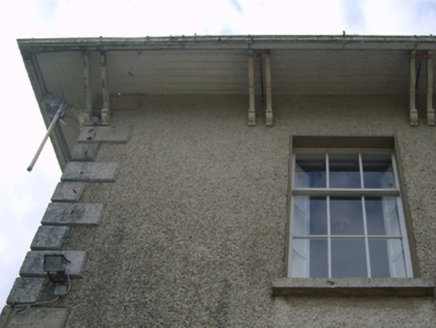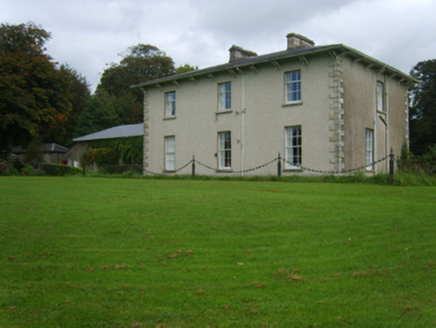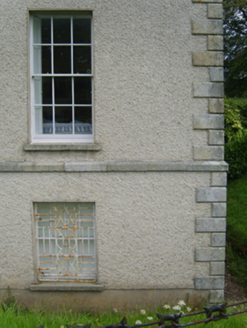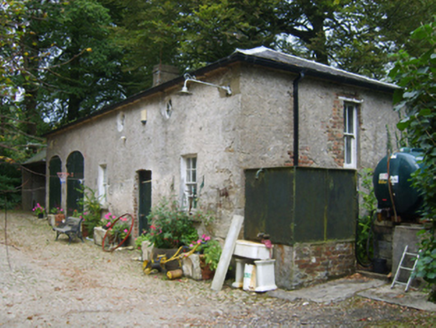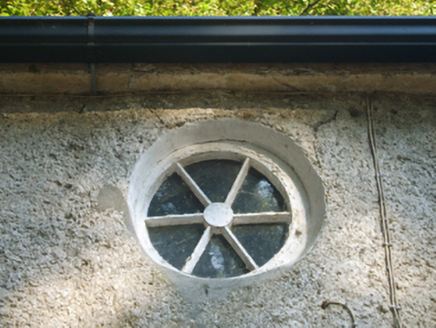Survey Data
Reg No
15704019
Rating
Regional
Categories of Special Interest
Architectural, Artistic, Historical, Social
Original Use
Country house
In Use As
Country house
Date
1785 - 1795
Coordinates
286083, 119408
Date Recorded
07/09/2007
Date Updated
--/--/--
Description
Detached three-bay two-storey over basement country house, built 1790, on a T-shaped plan centred on single-bay single-storey flat-roofed projecting porch to ground floor; three-bay two-storey rear (west) elevation. Occupied, 1901; 1911. Sold, 1979. Hipped slate roof with pressed or rolled lead ridges, paired granite ashlar central chimney stacks having cut-granite stringcourses below capping supported crested terracotta pots, and replacement uPVC rainwater goods on timber eaves boards on slightly overhanging timber boarded eaves having paired timber spandrels. Roughcast walls on cut-granite chamfered cushion course on rendered plinth with rusticated cut-granite quoins to corners. Hipped elliptical- or segmental-headed central door opening into country house, timber mullions supporting moulded cornice on timber transom, and concealed dressings framing glazed timber panelled double doors having sidelights below fanlight. Square-headed window openings with cut-granite sills, and concealed dressings framing eight-over-eight (basement), six-over-six (ground floor) or three-over-six (first floor) timber sash windows without horns. Interior including (ground floor): central hall retaining carved timber surrounds to door openings framing timber panelled doors; and carved timber surrounds to door openings to remainder framing timber panelled doors with timber panelled shutters to window openings. Set in landscaped grounds.
Appraisal
A country house representing an important component of the late eighteenth-century domestic built heritage of south County Wexford with the architectural value of the composition, one variously given as "Horetown Glebe…the residence of Reverend Edward Bayly [1789-1858]" (Lewis 1837 I, 633) or "Raheenduff of Joseph Fade Goff [----]" (Lewis 1837 II, 9), confirmed by such attributes as the compact rectilinear plan form centred on a restrained doorcase showing a pretty "Bat Wing" fanlight, albeit one largely concealed behind a Classically-detailed porch; the diminishing in scale of the openings on each floor producing a graduated visual impression; and the decorative timber work embellishing a slightly oversailing roofline. Having been well maintained, the elementary form and massing survive intact together with substantial quantities of the original fabric, both to the exterior and to the interior, including crown or cylinder glazing panels in hornless sash frames: meanwhile, contemporary joinery; Classical-style chimneypieces; and plasterwork refinements, all highlight the artistic potential of the composition. Furthermore, an adjacent coach house-cum-stable outbuilding (----); a walled garden (see 15704020); and a nearby gate lodge (see 15704021), all continue to contribute positively to the group and setting values of a self-contained estate having historic connections with the Stronge family including Colonel Maxwell Du Pré Stronge JP (1824-1916) 'late of Raheenduff Foulkesmills [sic] County Wexford' (Calendars of Wills and Administrations 1917, 729); Edward Owen Fortescue Stronge (1871-1949; cf. 15704101); and Maxwell Du Pré James Stronge (1904-73).
